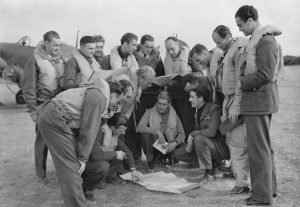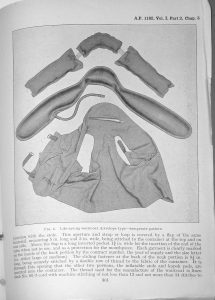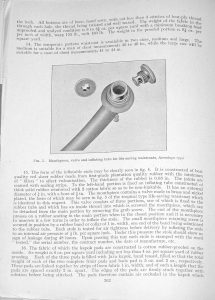1932 pattern mae west
 MAE WEST INTRODUCTION – Interesting facts “For an RAF airman to be shot down over the sea was an almost certain death sentence if the German rescue services were not close at hand.
MAE WEST INTRODUCTION – Interesting facts “For an RAF airman to be shot down over the sea was an almost certain death sentence if the German rescue services were not close at hand.
“Many a good fighter pilot was lost who would have been invaluable in the days that followed.”
An estimated 80 per cent of downed pilots died over the sea whereas the rate dropped to 50 per cent over land.
On Aug 8 it is believed 15 out of 18 airmen who bailed out were lost at sea.
Frustrated at the poor rescue effort a New Zealand pilot, Flt Lt RF Aitken, “scrounged” a Walrus flying boat from the Fleet Air Arm and saved 35 British and German airmen over the summer. Air chiefs had assumed that the high volume of shipping in British coastal waters meant that downed airmen would be spotted and recovered. But by August 19, Air Vice Marshal Sir Keith Park, who commanded the fighter group in the south east, ordered his flight controllers not to vector pilots over the sea because “too many were getting drowned”.
The critical shortage of pilots came very close to costing the British the campaign and it was only when the dogfights were fought over land did the tide begin to turn. By Thomas Harding, Defence Correspondent. (Photo: The average age of an RAF pilot in 1940 was 20. The strain they were under is clearly written on the face of Squadron Leader B J E ‘Sandy’ Lane (centre), pictured here aged 23. He was killed in combat 2 years later.)
Physical description
 1932 pattern vest – Designated under the RAF stores number of 22C/55, this type was first introduced into service in 1932 and was used during the Battle of Britain period of the Second World War. Some ‘users’ painted their life preservers with bright yellow paint so that they might be more quickly spotted should they have to bale out over water to await rescue; subsequent patterns were manufactured entirely of yellow material.
1932 pattern vest – Designated under the RAF stores number of 22C/55, this type was first introduced into service in 1932 and was used during the Battle of Britain period of the Second World War. Some ‘users’ painted their life preservers with bright yellow paint so that they might be more quickly spotted should they have to bale out over water to await rescue; subsequent patterns were manufactured entirely of yellow material.Working reproduction of the 32 pattern vest

Reproduction ‘Stole’ or Bladder (Neil Seaton)

The stole – Stole or bladder on the left at the time of writing this article is the only known reproduction of the original bladder. The valve is slightly different to the original however the difference is very subtle. This allowed me to do an accurate initial fact finding test with the 32 pattern vest. As you can see there is not much of an inflatable area around the neck compared to the larger bellows of the frontal area.
Testing the 32 pattern vest
Negatives –
- The colour of the vest is green, many pilots painted them yellow with RAF yellow aircraft dope
- Manual inflation would be challenging in the cold North Sea or English channel. The cold shock experienced when entering the water would make manual inflation very difficult.
- The brass inflation tube would also cause inflation problems in the cold waters around the UK. After a prolonged period in the water further inflation would be necessary and the metal fittings may be close to freezing
- The vest has no straps that hold it down between the legs, this was later improved on with the 41 pattern vest
- The floatation did not hold the body vertical slightly laid back at 45* which would be ideal. It tended to keep the body horizontal which is not ideal. This was largely due to the small inflated area around the neck.
Positives –
- Did it work? yes it did although many areas to be improved on. This would have been state of the art equipment back in 1932 for aviators.
- It is a comfortable vest and also effective with out inflation due to the kapok pads installed behind the bladder or stole.
- Easy to maintenance for the pilots who would only need to check for leaks periodically. Not a lot that can go wrong with the vest other than a puncture!
Air ministry publication on the 1932 pattern vest

page 302
